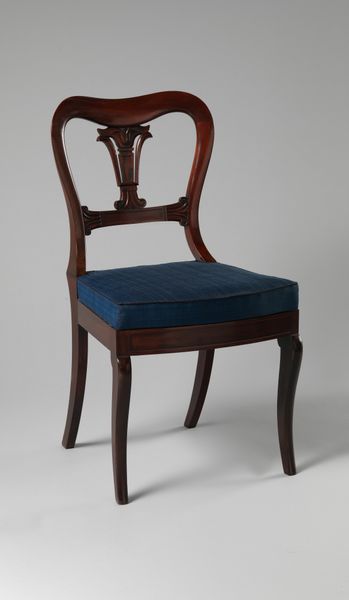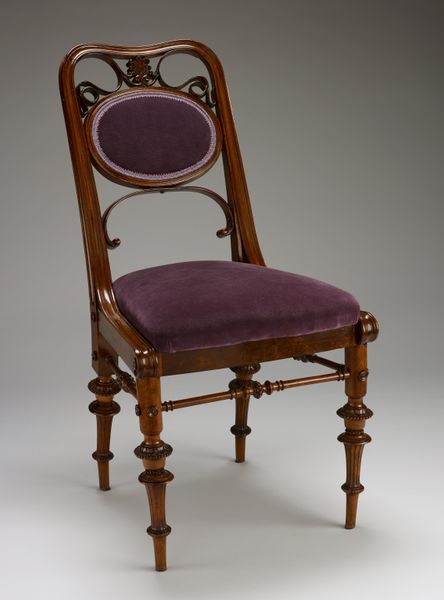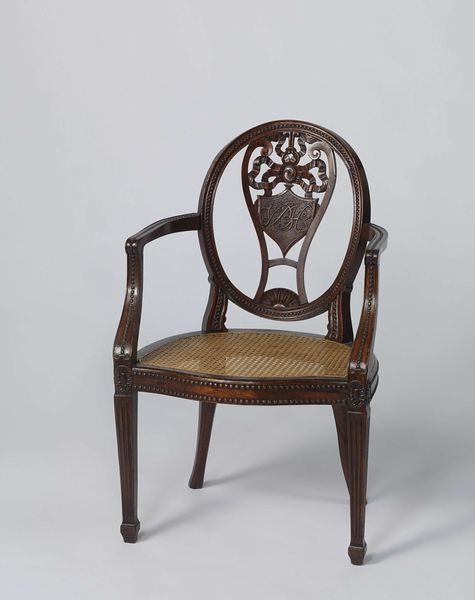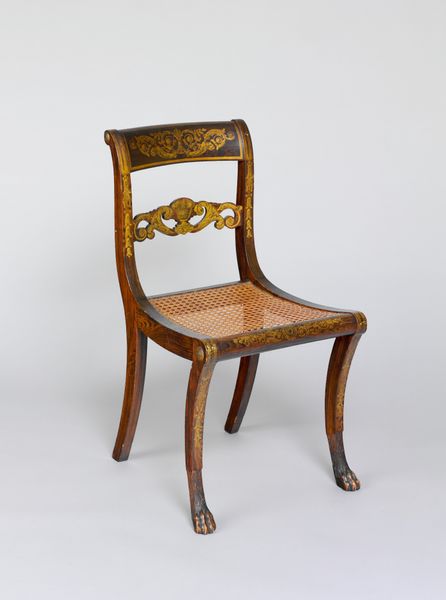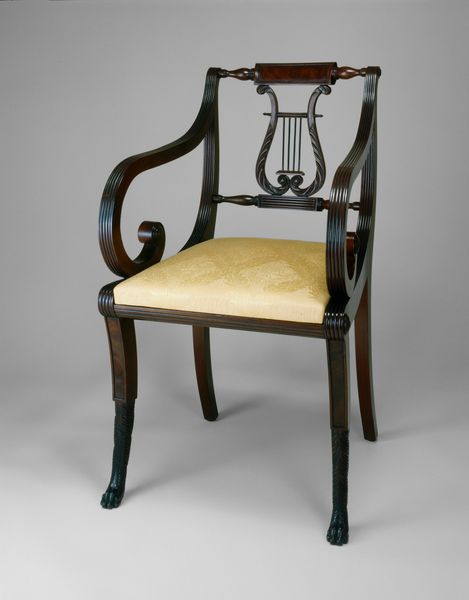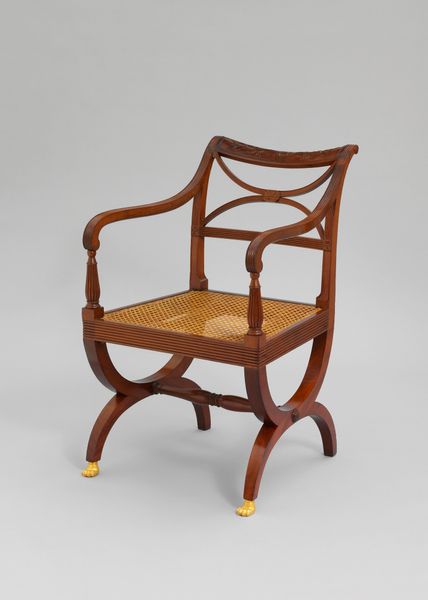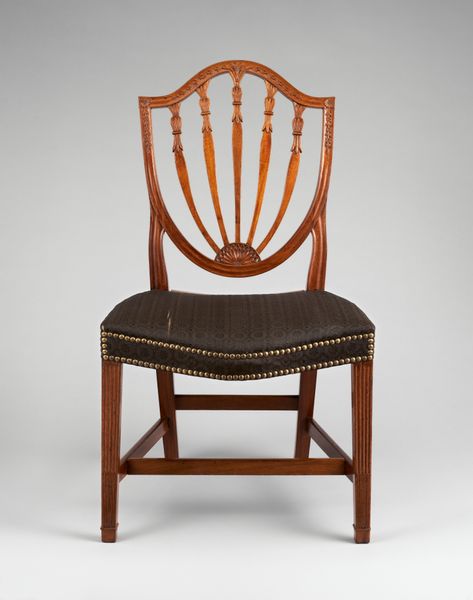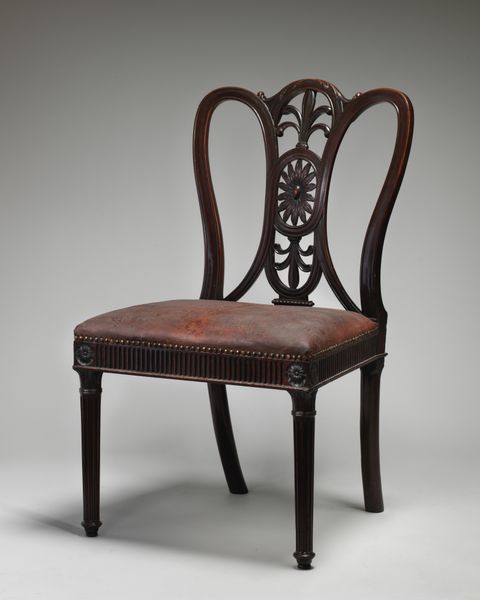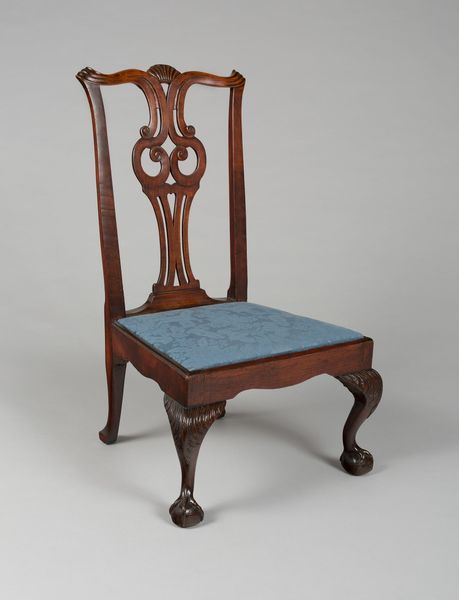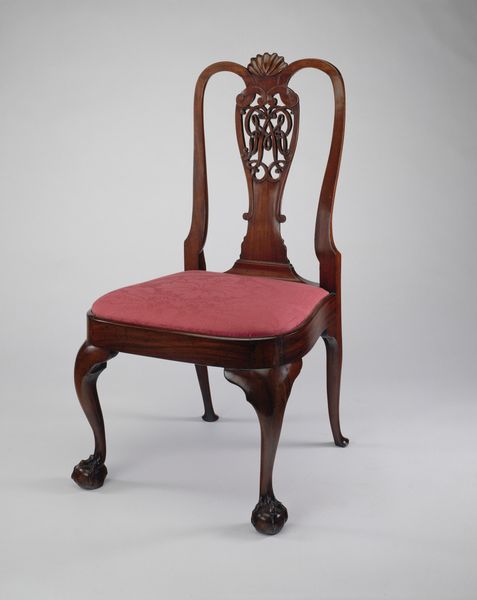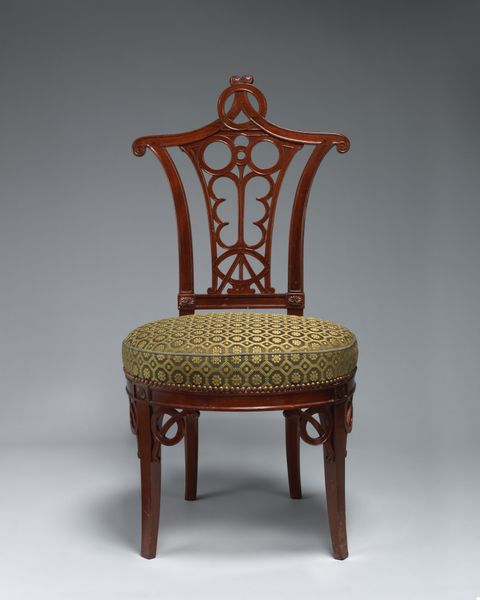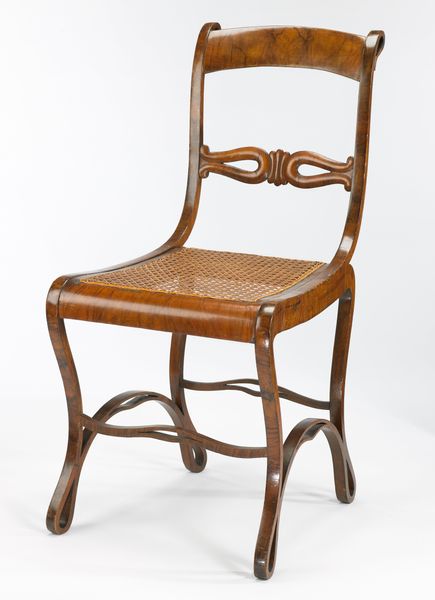
sculpture, wood
#
neoclacissism
#
furniture
#
classical-realism
#
sculpture
#
wood
#
decorative-art
Dimensions: confirmed: 37 1/4 × 23 7/8 × 21 1/2 in. (94.6 × 60.6 × 54.6 cm)
Copyright: Public Domain
Editor: Here we have the "Armchair en cabriolet", crafted between 1780 and 1790 by David Roentgen. The piece resides here at the Metropolitan Museum of Art and it's made of wood. It seems surprisingly delicate, almost fragile, for something meant to be sat upon. I'm particularly drawn to the swirling pattern in the backrest. What do you make of this chair, looking at it formally? Curator: Its formal success resides, as you astutely noted, in its delicacy and refinement. Observe the interplay between the linear structure of the frame and the curvilinear elements of the backrest, all rendered in mahogany. Consider the considered contrast of the dark wood against the ormolu mounts, the gilded bronze decorations. How does this contrast affect your perception of its volume? Editor: It makes it look lighter, less bulky than if it were a solid, undifferentiated mass. The gold draws your eye to all the edges, kind of dematerializing the form. It’s also visually pleasing that the brown of the seat echoes that of the mahogany. But why these specific shapes? Is there a historical logic in its ornamentation? Curator: Absolutely. We see the application of Neoclassical principles. Notice the symmetry, the measured proportions, and the restrained ornamentation derived from classical antiquity. Even the "cabriolet" form of the legs curves outward and recalls ancient Greek forms. These shapes were deliberate choices intended to communicate order, reason, and sophistication in contrast to the exuberance of earlier styles. Do you appreciate how the back embellishments reinforce the notions of linearity in shape? Editor: It certainly is cohesive and elegant, now that you point that out! This close attention to structure really makes you appreciate how intentional every single design decision was, going beyond just "chairness" to an intellectual aesthetic ideal. Curator: Indeed. Formal analysis allows us to perceive and understand such qualities of the chair, revealing how its physical characteristics articulate specific aesthetic and cultural values.
Comments
No comments
Be the first to comment and join the conversation on the ultimate creative platform.

